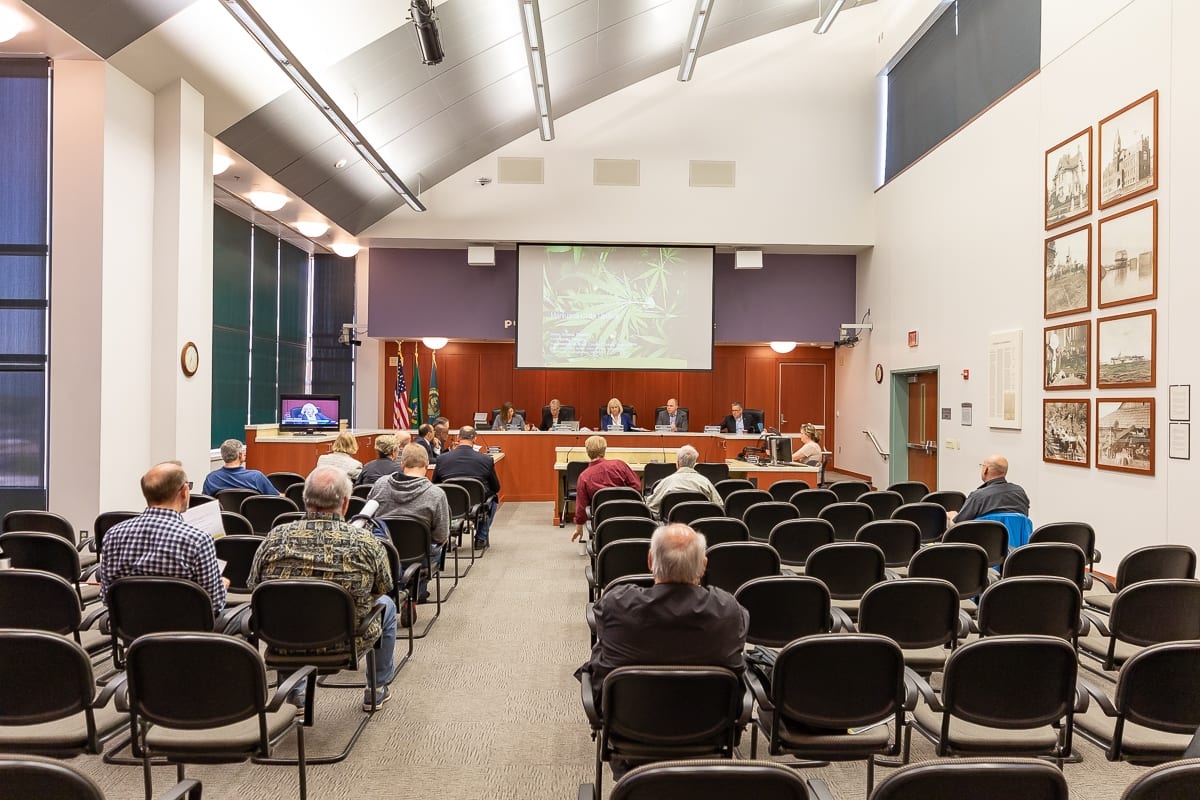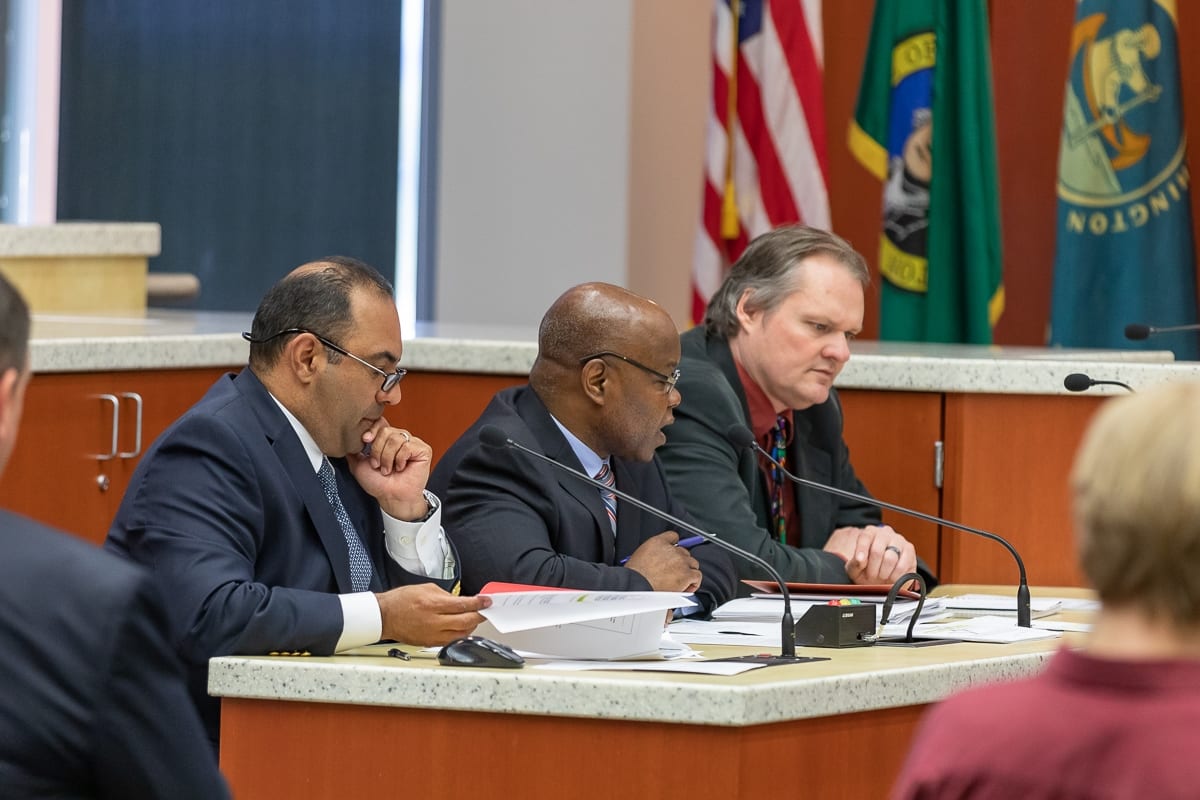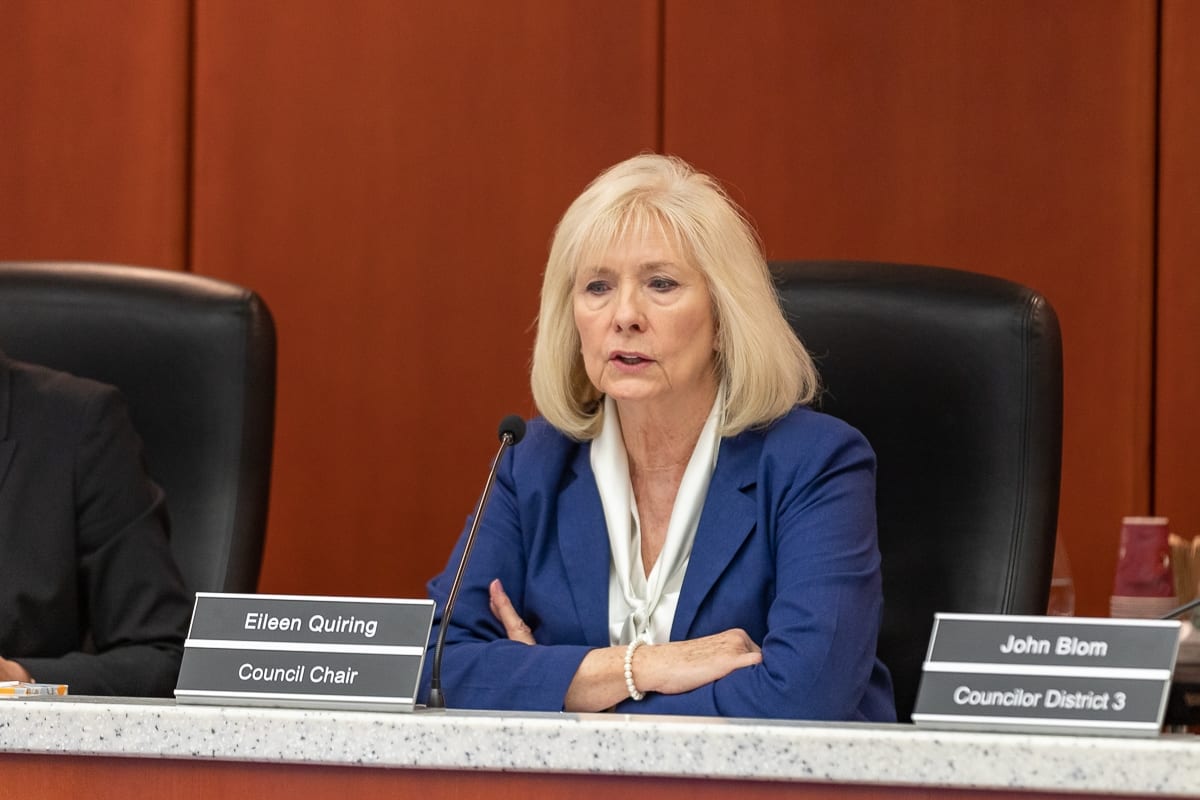A second work session discussed code changes if the 2014 ban ends up being lifted
CLARK COUNTY — While it’s still unclear which direction the current Clark County Council will go when it comes to their five-year-old ban on marijuana-related businesses in the unincorporated areas, it’s clear that they’re closer than ever to reversing course.
Last year the council held work sessions which focused largely on the potential risks of bringing cannabis retailers and producers into the county, as well as the financial incentive of the tax revenue they would generate. Last month councilors heard again from law enforcement and public health officials, who warned that crime rises around pot shops and teenagers could find the drug easier to obtain if it were more widely available.

But the election of Temple Lentz over Jeanne Stewart in the council’s District One seat last November took out one of two staunch opponents to lifting the ban. The other is council chair Eileen Quiring. Councilors John Blom and Julie Olson have not taken a firm stance on the issue, but have given indications they may support lifting the moratorium. Newcomer Gary Medvigy, who was named to fill Quiring’s District Four seat, has indicated he has significant public health concerns about access to marijuana, but remains undecided on the ban.
At a follow-up work session this week, county staff ran through a draft version of code changes that would need to happen before the moratorium could be lifted.
“I don’t want to assume we are lifting the ban,” said Quiring in response to a question over how staff should proceed when it comes to looking at several code-related questions.
If council decides to proceed, the main questions will center around what constitutes a major change to county code, and what are minor. Staff said minor changes could be implemented within 90 days, while major changes could take up to 180 days to allow for a more complete process of public involvement.

That distinction was the primary source of conflict in the meeting, as Olson said she would prefer a change in allowed operating hours from 8:00 a.m. to 11:00 p.m., from the currently codified 8:00 p.m. closing time, which was the original mandate from the state.
“Three hours is not a substantive change,” said Olson, saying she would prefer the move to be in line with policy in the city of Vancouver.
“Actually, as the chair of the council, I would say that going from 8 o’clock in the evening to 11 o’clock in the evening is a substantive change,” countered Quiring.

Another issue could be how the county measures the distance from a marijuana retailer. Under county code, any cannabis operation must be at least 1,000 feet from schools, parks, daycare centers, rec centers, transit centers, arcades, and any church or religious facility. Current practice is to measure from the edge of the property line, but Lentz pointed out that a pot shop could be located at the center of a large strip mall, meaning the actual distance from the edge of that property could mean much more than 1,000 feet from the actual retail location. County staff said further study would be done to determine if it would be possible to measure from the actual retail location.
County code also allows the council to add other facilities to the distance exclusion list, and Lentz suggested adding substance abuse treatment centers, to help reduce the temptation for people trying to get clean. Councilor Medvigy suggested that could be difficult as many Alcoholics Anonymous or Narcotics Anonymous meetings move from place to place. Quiring said then it may be up to the organizers of those meetings to make sure they’re not holding them near a marijuana shop.
The work session ended without a clear direction from the council, though staff said they would attempt to answer some of the questions in a future Council Time meeting, and then figure out how to proceed from there. Quiring said there were four public open houses prior to the former County Commission deciding to pass the moratorium, and she would like to see a similar public process this time around.

“I do believe that, since public meetings have not taken place throughout the community since 2013, that’s quite a few years,” said Quiring. “And we’ve also had legislative changes since then that people should be aware of.”
Quiring pointed out that, while Initiative 502 passed statewide in 2012, it failed in Clark County at the time. While she admitted that demographics and views on the drug may have changed since then, she would prefer a slow and methodical approach. Medvigy said he had had further discussions with Public Health Director Doctor Alan Melnick since the previous cannabis work session, and would prefer more time for all of that information to be entered into the public record before any course of action is determined.




